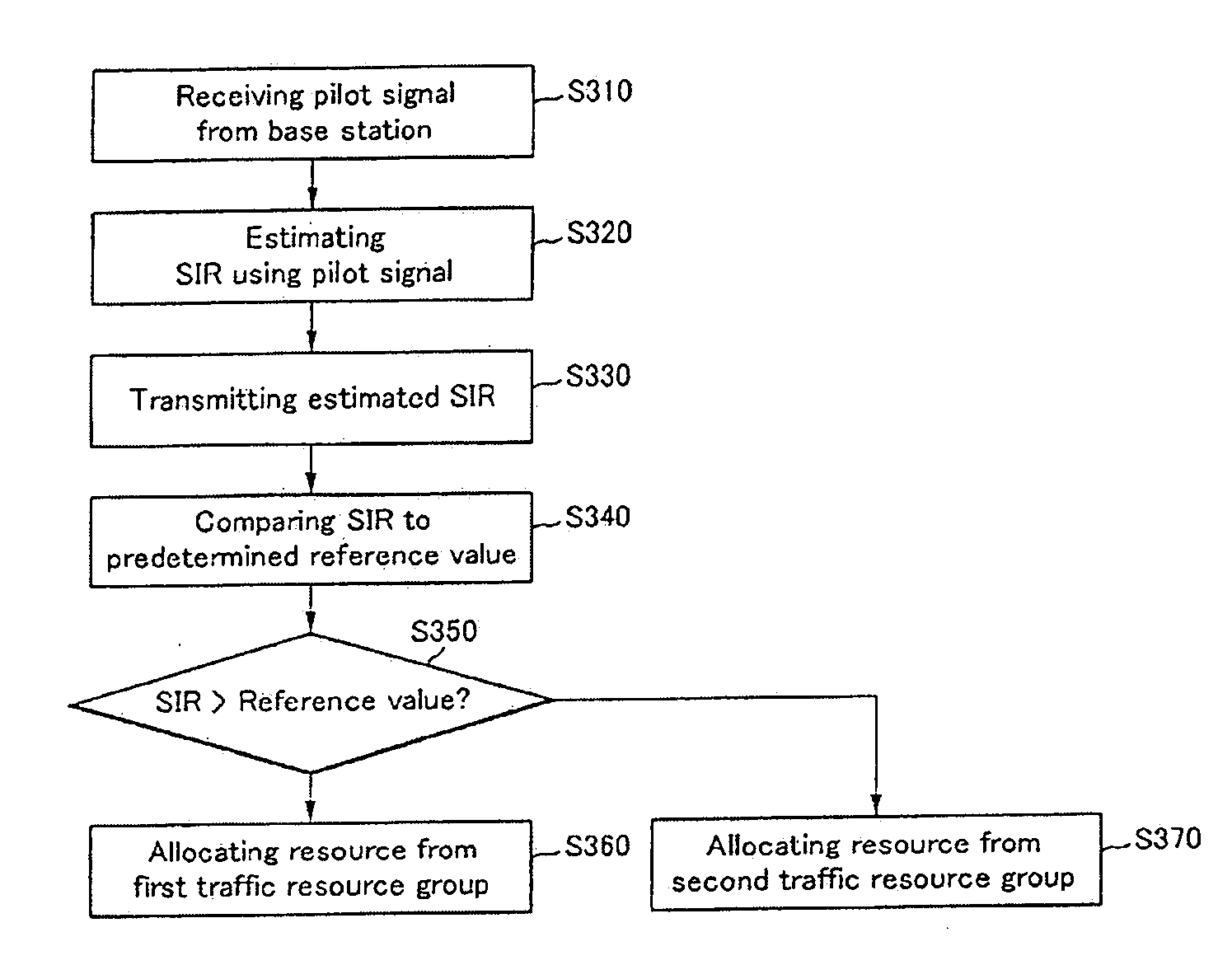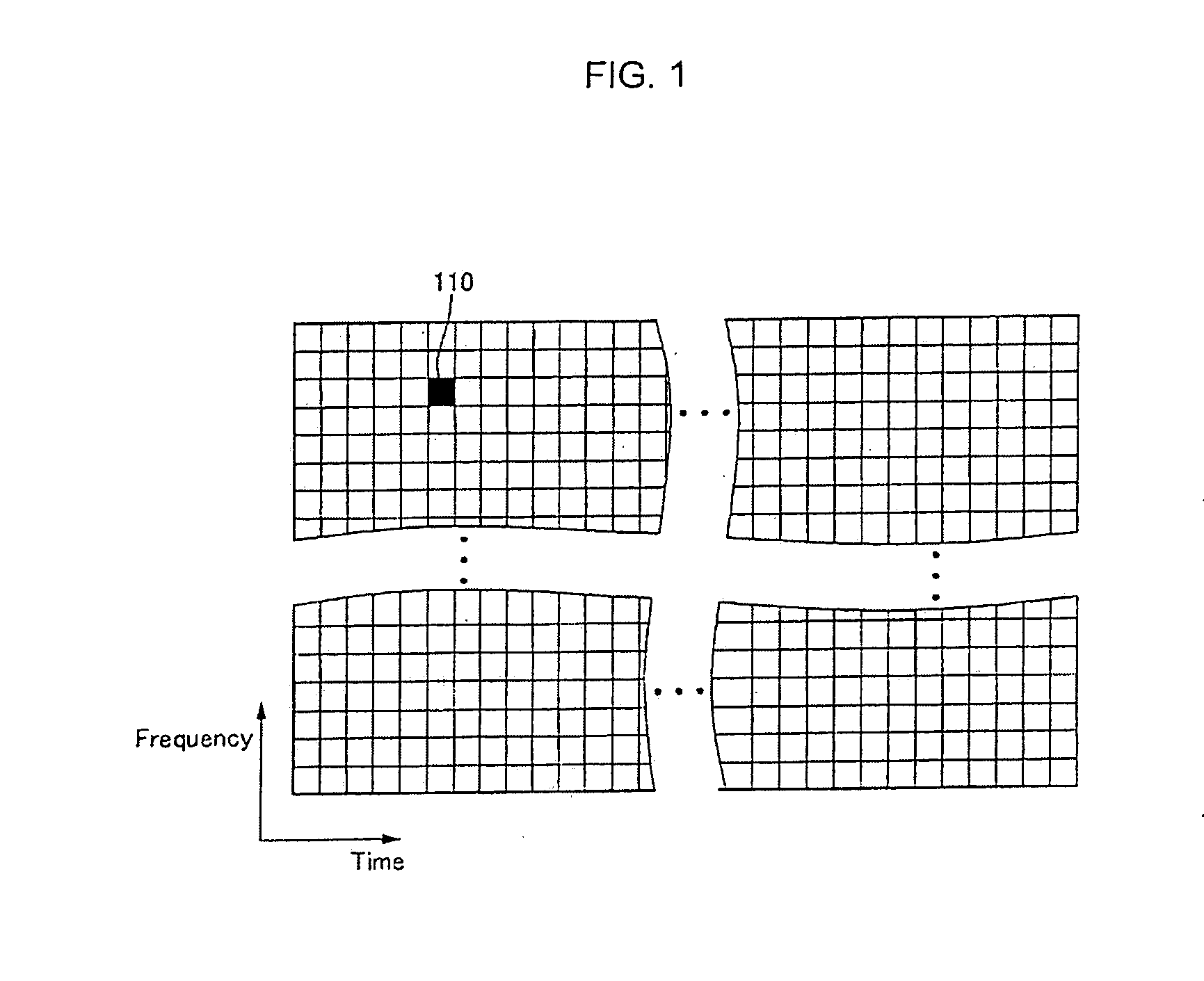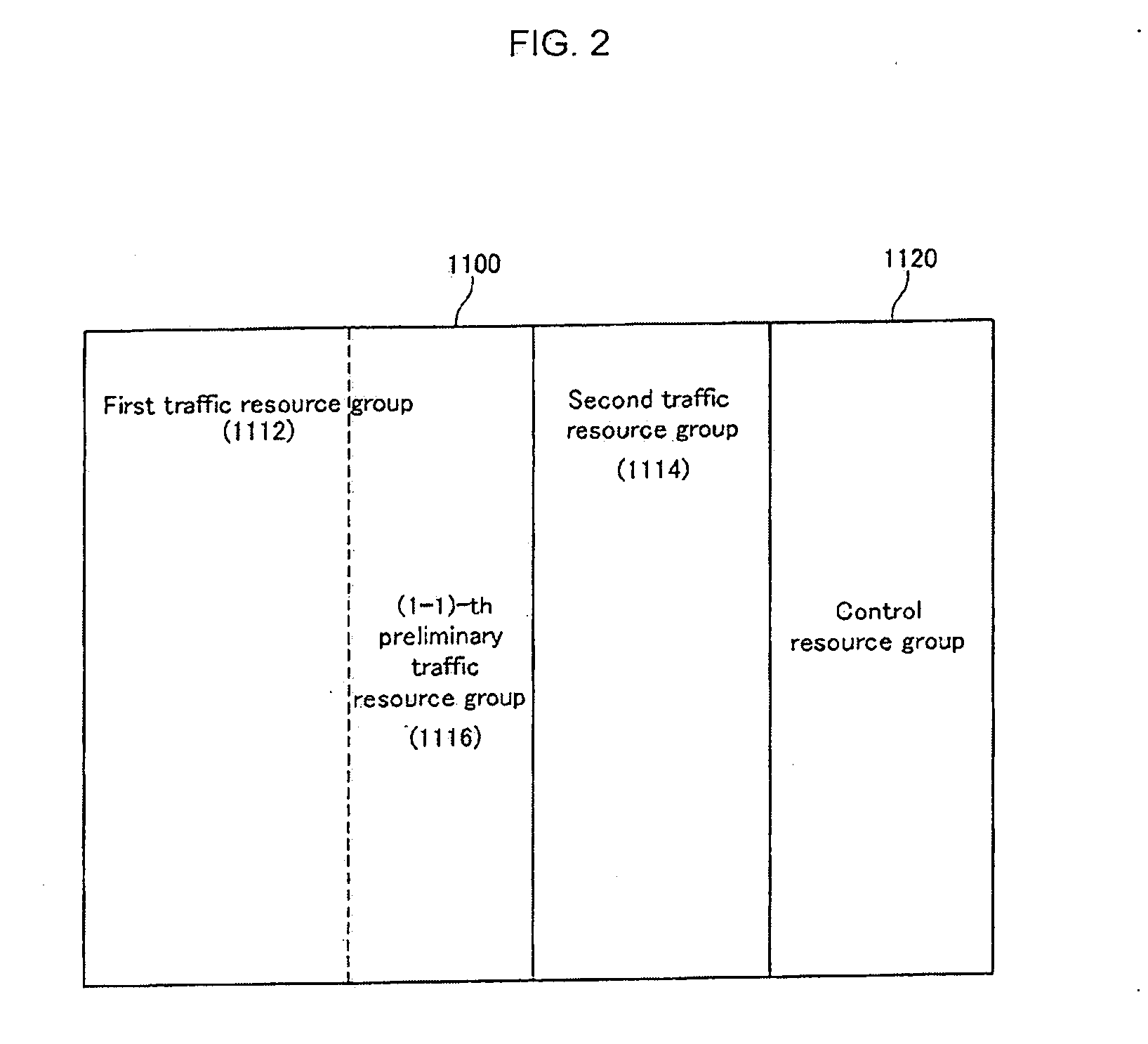Method for resource partition, assignment, transmission and reception for inter-cell interference migration in downlink of OFDM cellular systems
a resource and inter-cell technology, applied in the field of resource division, allocation, and transmitting/receiving methods of downlink, can solve the problems of system capacity reduction, average interference of each resource area, and difficulty in achieving cell planes, so as to reduce inter-cell interference. , the effect of easy cell plan
- Summary
- Abstract
- Description
- Claims
- Application Information
AI Technical Summary
Benefits of technology
Problems solved by technology
Method used
Image
Examples
Embodiment Construction
[0051]In the following detailed description, only certain exemplary embodiments of the present invention have been shown and described, simply by way of illustration. As those skilled in the art would realize, the described embodiments may be modified in various different ways, all without departing from the spirit or scope of the present invention. Accordingly, the drawings and description are to be regarded as illustrative in nature and not restrictive. Like reference numerals designate like elements throughout the specification.
[0052]When it is described that an element is coupled to another element, the element may be directly coupled to the other element or coupled to the other element through a third element.
[0053]FIG. 1 schematically illustrates a radio resource structure of OFDM system according to an exemplary embodiment of the present invention,
[0054]In an OFDM system, a radio resource is divided into a plurality of unit radio resources 110 based on a time axis and a frequ...
PUM
 Login to View More
Login to View More Abstract
Description
Claims
Application Information
 Login to View More
Login to View More - R&D
- Intellectual Property
- Life Sciences
- Materials
- Tech Scout
- Unparalleled Data Quality
- Higher Quality Content
- 60% Fewer Hallucinations
Browse by: Latest US Patents, China's latest patents, Technical Efficacy Thesaurus, Application Domain, Technology Topic, Popular Technical Reports.
© 2025 PatSnap. All rights reserved.Legal|Privacy policy|Modern Slavery Act Transparency Statement|Sitemap|About US| Contact US: help@patsnap.com



